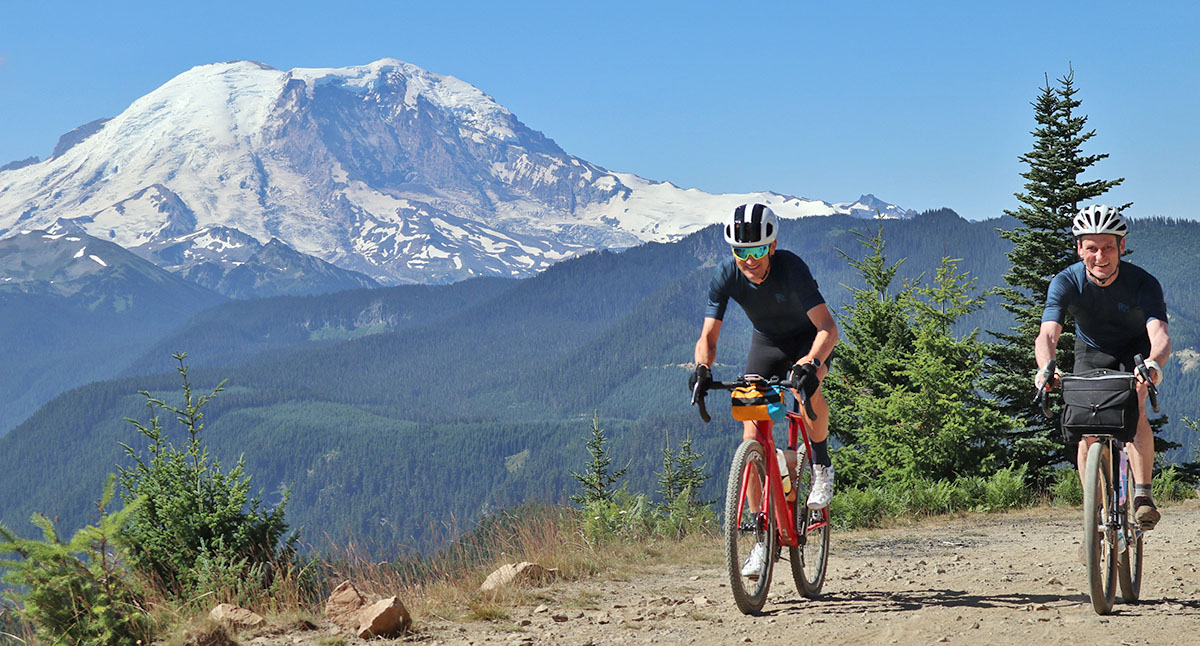How to Select Your Rene Herse Tires
Selecting Rene Herse tires for your bike is easy, because our program is logical and simple. It’s all based on performance. We don’t offer dozens of functionally similar tread patterns—just three that cover all riding conditions. Rene Herse tires are available with four different casings, because the casing, more than anything else, determines the performance and puncture-resistance of your tires. Here’s how to find the perfect tires for your bike, your terrain, and your riding style.
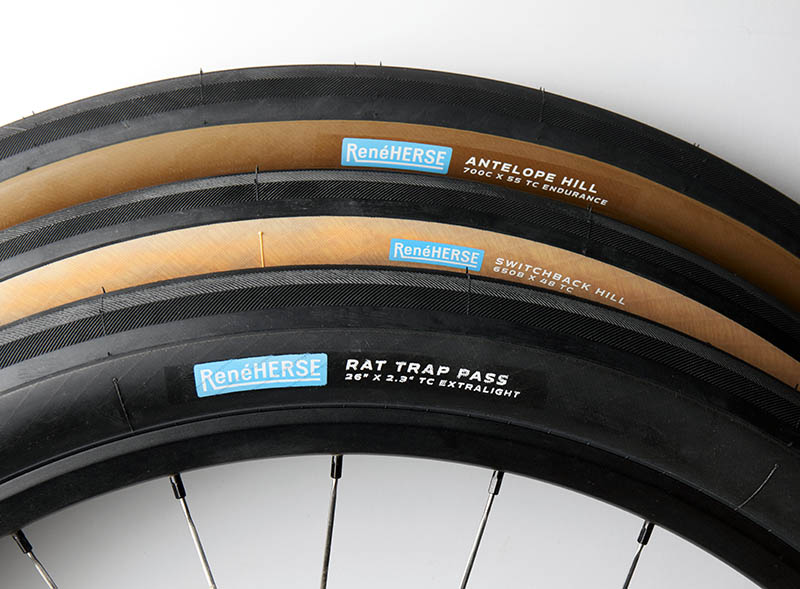
Step 1: Wheel Size
Rene Herse tires are available in the three popular wheels sizes, giving you choices no matter which wheels you have on your bike. Wheel sizes can be confusing, but different designations for each size mean the same thing:
- 650B / 27.5″ / ISO 584 mm
- 700C / 29″ / ISO 622 mm
- 26″ / ISO 559 mm
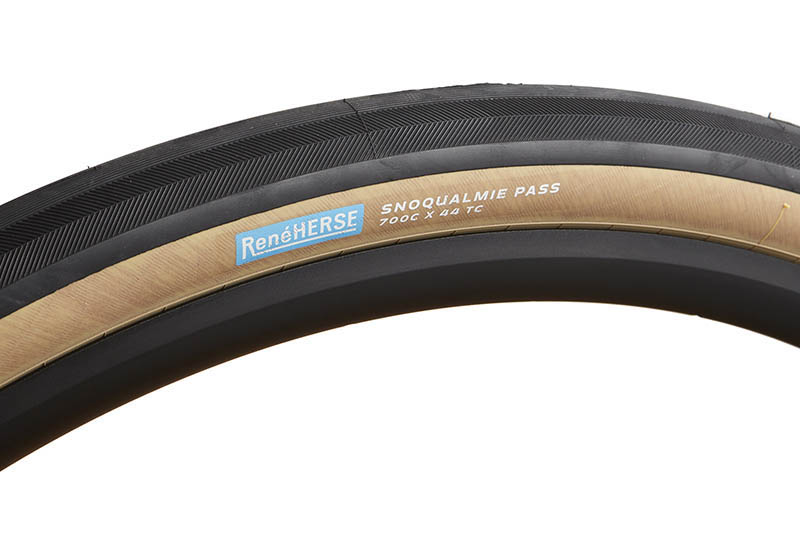
Step 2: Choose your tread pattern
We offer just three tread patterns, but they cover all the conditions you’ll encounter on your rides. All our tire treads are black, because black rubber offers the best traction and wear resistance.
If you ride mostly on pavement, the choice is easy: Our all-road tread pattern has fine ribs that interlock with the road surface and offer superior grip, especially in wet conditions. This tread pattern also works very well on occasional gravel (see top photo).
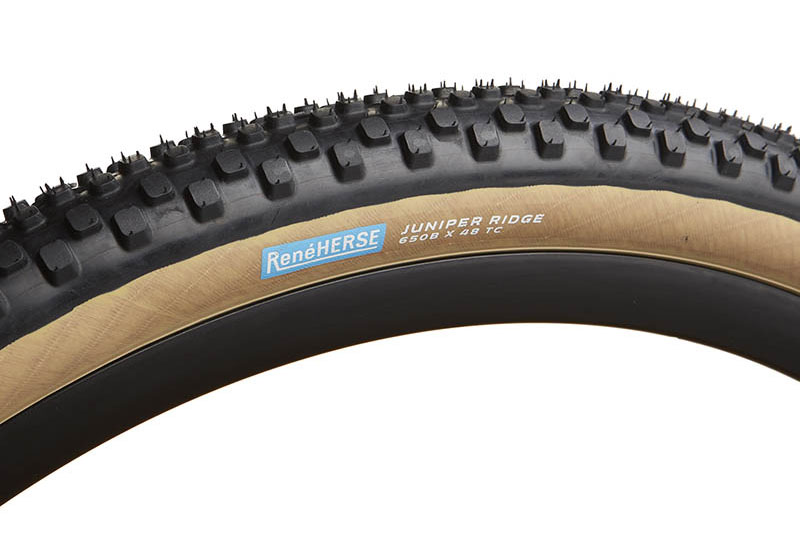
For loose conditions, and especially if you may encounter mud or even snow on your rides, choose our dual-purpose knobbies – even if a significant part of your rides are on pavement. We’ve designed our knobs so that they roll smoothly and don’t squirm: Our knobbies offer the same speed and cornering grip on pavement as our class-leading all-road tires. (Smaller knobs flex more and actually use more energy.) Most Rene Herse knobbies use our exclusive noise cancellation technology to make them quieter than you’d ever think a knobby could be. Despite their excellent on-pavement performance, the big knobs are widely spaced, so they grip tenaciously when other tires start sliding.
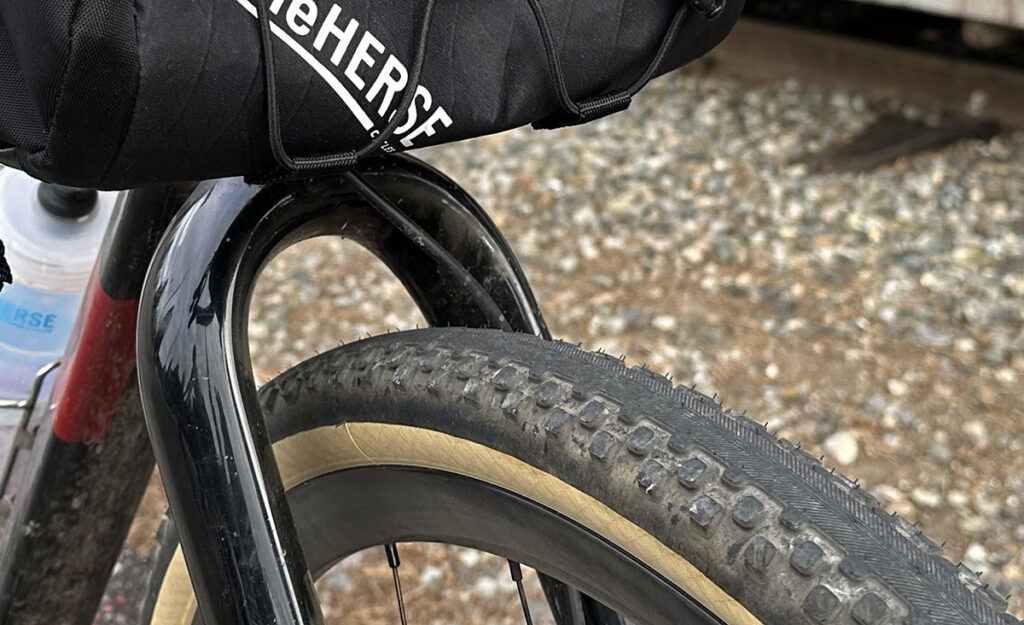
Rene Herse semi-slicks combine the best of both worlds. Designed for our professional gravel racers, the slick center tread offers optimal power transmission and ultra-low rolling resistance. The slick section bleeds seamlessly into the side knobs, so you never have awkward transitions when you lean into corners. The first row of side knobs is anchored on the center tread for extra stiffness—further improving power transmission and reducing rolling resistance. The tire’s round profile leans into corners without any surprises, unlike other semi-slicks that suddenly climb onto the side knobs and lose traction. All this makes Rene Herse tires unique among semi-slicks: all the advantages, but none of the drawbacks.
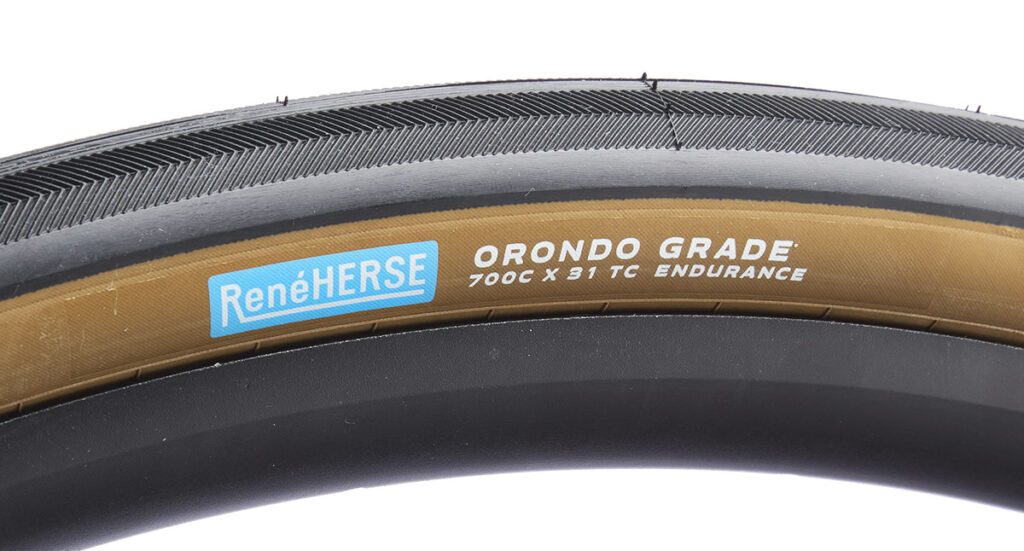
Step 3: Choose your tire width
Rene Herse tires are available in widths between 26 and 55 mm. Can’t decide on a size? We usually recommend the widest tires you can easily fit on your frame.
Not sure? Don’t sweat it: For speed and ride quality, the supple casings of Rene Herse tires make a bigger difference than a few millimeters in width. If you aren’t sure whether a certain tire will fit, go down one size. Better to have a little extra clearance than a tire that rubs. If you install your new tires and find that you have extra clearance, you can always size up in the future, when your tires wear out.
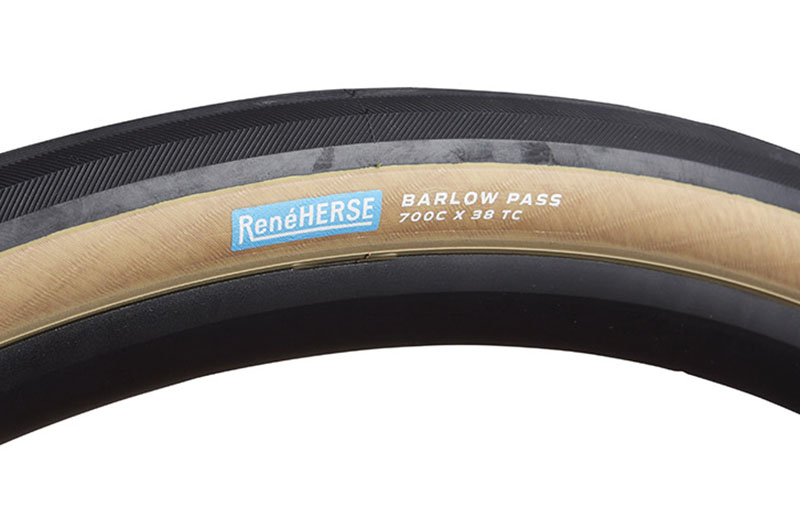
Step 4: Choose your casing
This is where you’ll make the biggest difference in the performance and feel of your bike. All casings have the same tread, so you get the same longevity no matter which version you choose. What’s different between casings are speed, puncture resistance, comfort and ride feel.
The Standard casing is a great all-round option, with the supple performance and great ride that has made our tires famous. It’s also our most economical option. Even our Standard casing is incredibly fast: Our Bon Jon Pass Standard scored fourth-fastest of all tires that TOUR magazine has ever tested.
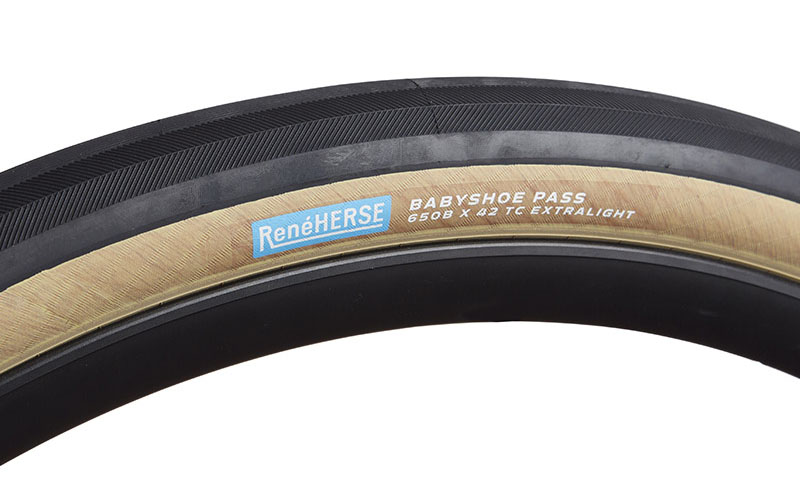
For the ultimate ride quality and speed, choose our Extralights. There is nothing else like them. Once you’ve ridden them, you won’t want to ride anything else. We ride them on some pretty rough terrain, too. Today’s tires are wider and run at lower pressures, so there is much less risk of slashing a sidewall than you might think.
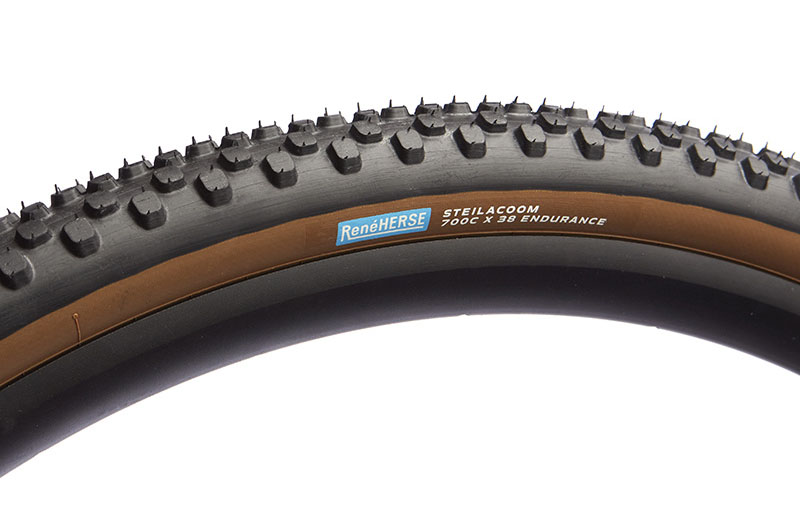
If you get too many flats on your rides, or if you’re heading into rough terrain, we recommend our Endurance casing. It uses the same ultra-fine threads as our Extralight, but in a denser weave for greater durability. Plus there is an extra protection layer that wraps around the entire sidewalls and tread. The result is a tire that’s ultra-tough and ultra-fast—and lighter than most gravel tires on the market.
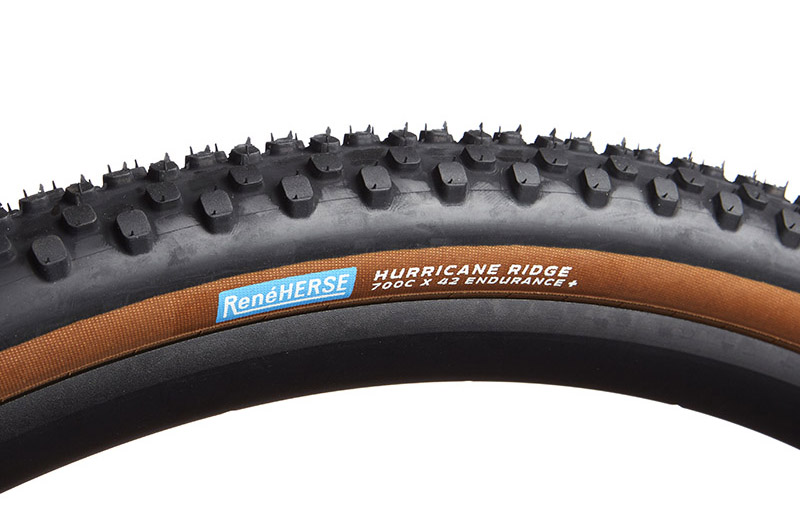
The Endurance Plus is a true adventure tire. It’s one of the toughest tires you’ll find this side of a downhill mountain bike tire. Choose the Endurance Plus when you are heading into the unknown, where a slashed tire could mean walking for days until you reach civilization. The Endurance Plus is still remarkably light and speedy for such an ultra-tough tire.
That’s all there is to choosing your Rene Herse tires. It’s simple, because the goal isn’t to nerd out on tires, but to enjoy the ride.
A few more things:
- Most Rene Herse tires are tubeless-compatible. Tubeless-compatible tires carry ‘TC’ in the name.
- All Rene Herse tires can be used with tubes, including our class-leading TPU tubes.
- All Rene Herse tires are compatible with hookless rims, as well as rims with hooks.
- Not sure how wide a tire will fit? How to measure your frame’s tire clearances.
- For the science behind these recommendations, check out this article.
Let’s get started: Choose your wheel size:


